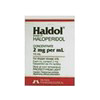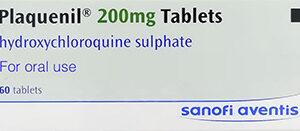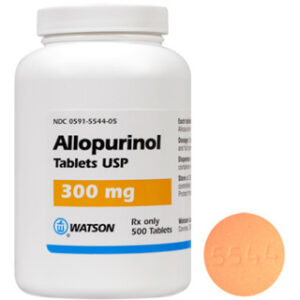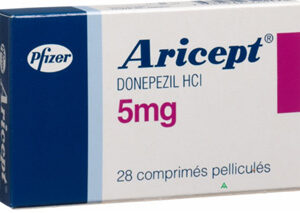Generic and Brand Names
Haldol is the brand name for the antipsychotic medication whose generic name is haloperidol. It is used primarily to treat psychotic disorders, and it is classed as a typical antipsychotic drug.
Pharmacological Class
Haloperidol is a butyrophenone derivative that exhibits strong antipsychotic properties and a high potential for neuroleptic effects. It functions as a dopamine D2 receptor antagonist.
Approved Indications
Haldol is indicated for use in the management of schizophrenia, acute psychotic states and delirium, and for the control of tics and vocal utterances of Tourette’s syndrome. It may also be used off-label for other conditions as deemed appropriate by a healthcare provider.
Dosage Forms and Strengths
Haldol is available in oral tablets, oral solution, and as an injectable. Tablet strengths include 0.5 mg, 1 mg, 2 mg, 5 mg, 10 mg, and 20 mg. The injectable form is available in concentrations of 5 mg/mL for the injectable solution and 50 mg/mL for the long-acting injectable.
Administration Routes
Haldol can be administered orally, intramuscularly, or intravenously. The long-acting form of haloperidol, Haldol Decanoate, is given intramuscularly only.
Dosing Recommendations
Initial dosing for Haldol varies depending on the indication and patient needs. For schizophrenia, initial oral dosing can range from 0.5-5 mg twice daily, with adjustments depending on therapeutic response and tolerability. The long-acting injectable can be initiated after stabilization on oral formulations, with typical initial doses ranging from 10-20 times the daily oral dose given monthly.
Pharmacokinetics
Haldol is well absorbed after oral administration with bioavailability ranging from 60-70%. Peak plasma concentrations occur within 2-6 hours post-ingestion. The injectable forms have a slower onset of action but a prolonged duration. The elimination half-life of haloperidol ranges from 14 to 26 hours, with injectable forms having a prolonged half-life up to several weeks due to their depot release.
Mechanism of Action
Haldol works primarily by blocking dopamine D2 receptors in the brain, which alters the effects of dopamine and reduces psychotic symptoms. It also has a lesser affinity for blocking serotonin receptors, which may contribute to its therapeutic effects and side effects.
Metabolism and Excretion
Haloperidol is extensively metabolized in the liver by several cytochrome P450 isozymes, primarily CYP3A4 and CYP2D6. It undergoes glucuronidation and is excreted in urine and feces. Less than 1% of the drug is excreted unchanged in urine.
Drug Interactions
Haldol may interact with a variety of medications including other CNS depressants, anticholinergic agents, drugs known to prolong the QT interval, and inhibitors or inducers of CYP3A4 and CYP2D6 such as certain anticonvulsants, antidepressants, and antifungals.
Adverse Reactions
Common adverse effects associated with Haldol include extrapyramidal symptoms (EPS), drowsiness, insomnia, agitation, dry mouth, blurred vision, and constipation. Severe reactions may include tardive dyskinesia, neuroleptic malignant syndrome, severe QT prolongation, and life-threatening arrhythmias.
Special Populations Precautions
In elderly patients, particularly those with dementia-related psychosis, Haldol may increase the risk of death. Caution is also advised in patients with pre-existing cardiac conditions, electrolyte disturbances, or those at increased risk for hypotension.
Pregnancy and Lactation Considerations
Haldol is classified as a pregnancy category C drug. It should only be used during pregnancy if the potential benefit justifies the potential risk to the fetus. Haloperidol is excreted in human milk, so a decision must be made to discontinue nursing or discontinue the drug, taking into account the importance of the medication to the mother.
Monitoring Parameters
Patients on Haldol should be monitored for psychiatric symptoms, extrapyramidal side effects, and other potential adverse effects. Regular assessment of metabolic parameters, including blood glucose and lipid profiles, may be indicated. EKG monitoring may be necessary for those with a significant risk of QT prolongation.
Storage and Handling
Haldol tablets and oral solution should be stored at room temperature, away from light and moisture. Injectable solutions should be stored according to manufacturer instructions and protected from light. Freezing should be avoided.
Disposal Recommendations
Unused or expired Haldol should be disposed of in accordance with official guidelines to prevent environmental contamination or accidental ingestion by humans or animals.
Emergency/Overdose Management
In the event of an overdose, supportive care is the primary intervention, including securing airways, monitoring cardiac status, and managing symptoms. There is no specific antidote for haloperidol overdoses. Activated charcoal may be administered if the overdose is recent. Continuous EKG monitoring may be necessary to detect potential cardiac arrhythmias.






Reviews
There are no reviews yet.